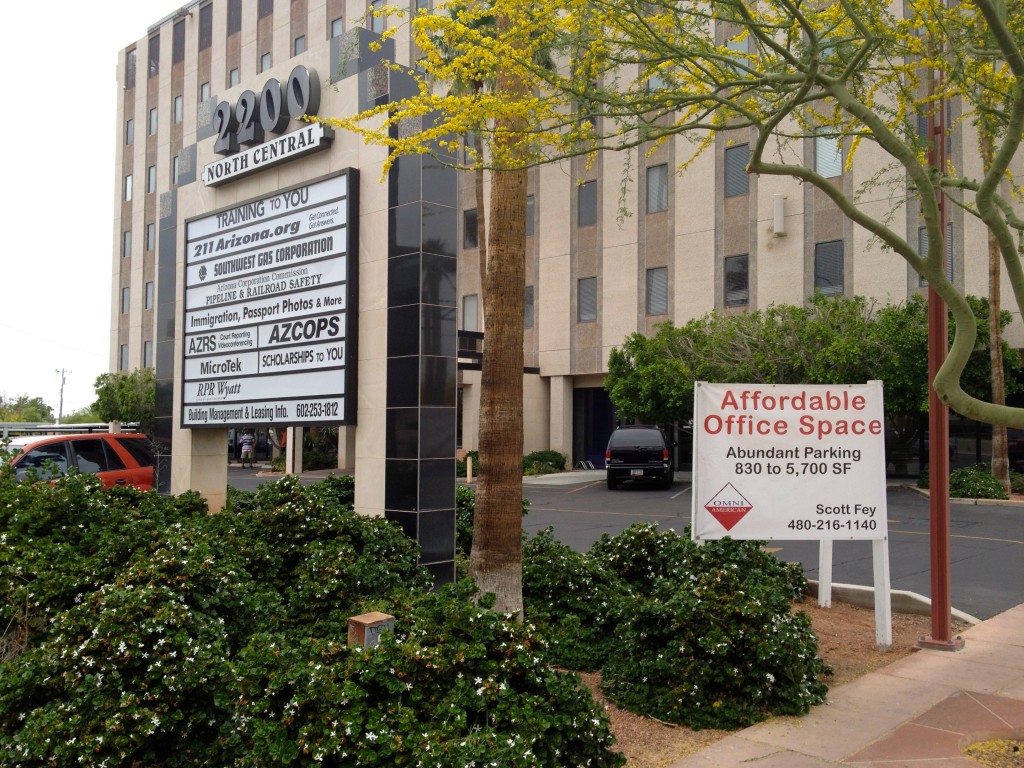Some follow-up observations on the closing of the Downtown Phoenix Public Market’s Urban Grocery and a hypothesis to chew around. (with updates)
[UPDATE 1, 1:20pm 5 May 2012: Community Food Connections, the public-private partnership behind the Downtown Phoenix Public Market, released a statement. The link is below.]
The Downtown Phoenix Public Market’s indoor Urban Grocery is closing in a week.
That we know. We also know that the outdoor Wednesday evening and Saturday morning markets are staying open, Food Truck Fridays will go on, and Royal Coffee at the Market will remain open.
Here are two images from the Downtown Phoenix Journal with signs sharing this news:
Three things strike me as odd here. Now, I admit that I have no inside information and that all I’m saying here is speculation. But these are observations worth noting:
- The only thing that’s closing is the indoor component of the market. Both Royal Coffee and the outdoor components (Wednesday and Saturday open-air markets and Food Truck Friday) are staying.
- Some of the recent First Street/Pierce Street streetscape improvements and pedestrian enhancements really tied into the Public Market area. The City of Phoenix spent a lot of money on these projects and there is a public art component that’s yet to be completed. While those might be for the outdoor components of the market, it’s still worth noting.
- If memory serves, the group that owns/operates the DPPM is a public-private partnership. It’s not an indictment of anything but it’s something to keep in the back of one’s mind when evaluating this situation.
Now, as people have observed both on Twitter and in my first post on the topic, the Urban Grocery isn’t really all that much of a grocery store. I admit that as much as I try to shop local and support local agriculture, there are times when Bashas’ or AJ’s will get my business just because their prices are lower. (But hey, they’re both still local!) I suspect that many others have a similar viewpoint. That leads me to my hypothesis of this entire situation:
I wonder if the Urban Grocery is just going to be rebranded and relaunched as something else, perhaps as an actual urban grocery store.
I have no firm information to corroborate my hypothesis. It’s just a gut feeling, actually. Don’t go quoting me on this! But given the factors above, it might just be something to chew around.
Don’t get me wrong: I’m sad that the Urban Grocery’s going away. It’s been a wonderful “third place” for downtown Phoenix and I’ve had many wonderful meetings and conversations there over the two-and-a-half years it’s been opened. If it goes away completely, then the loss that it has on the downtown Phoenix community is immeasurable. But if something else comes to the space, then perhaps this might have been for the better.
Time will tell. I’m sure that we’ll learn more in the days and weeks to come.
UPDATE 1, 1:20pm 5 May 2012: Community Food Connections, the nonprofit organization behind both the Downtown Phoenix Public Market and the Urban Grocery, released this statement:
“For the last 2.5 years, the Urban Grocery has been the only grocery store in downtown which also supports many small, diverse and local businesses. The outdoor market will continue that mission of supporting small farmers and businesses while creating a great community gathering place for the 100,000 people that came during the last year. I also want to personally thank our landlord and the City of Phoenix. Both have gone above and beyond in their support of this community project.”
“Additionally, Cindy Gentry has resigned as executive director of Community Food Connections. In my entire career I have honestly never met anyone so dedicated to the community and the mission of an organization. Her contribution to this community and downtown in particular has been amazing and she will be sorely missed. In the meantime the board of directors will continue the outdoor market with help from people already involved in running it on a weekly basis. Like any business there are risks with opening your doors and sometimes it just does not work out. It can be particularly difficult when it is such a community based business. However, I want everyone to keep the faith because the outdoor market is doing great.”
“Thank you to everyone who has supported us over the years and please come visit us at the Phoenix Public Market every Wednesday and Saturday.”





